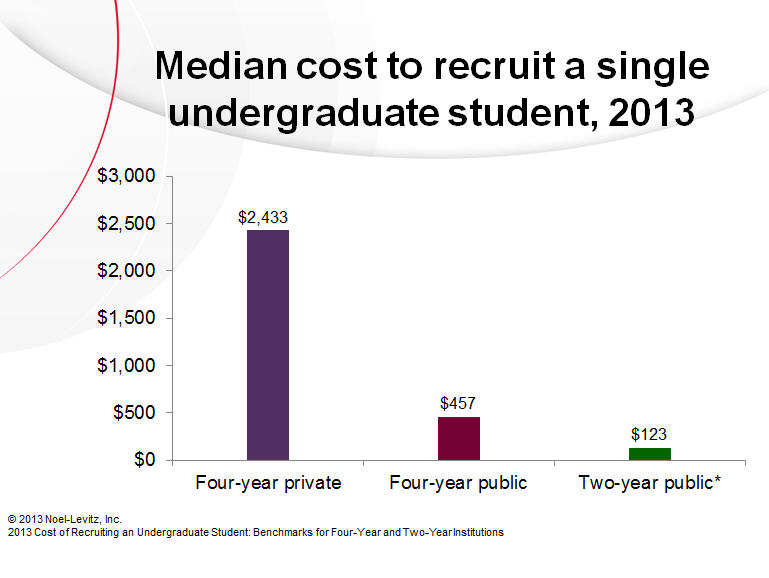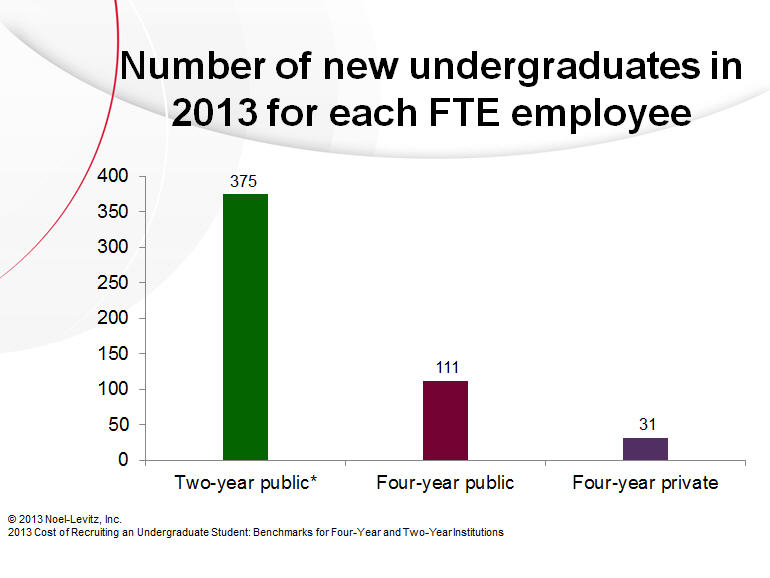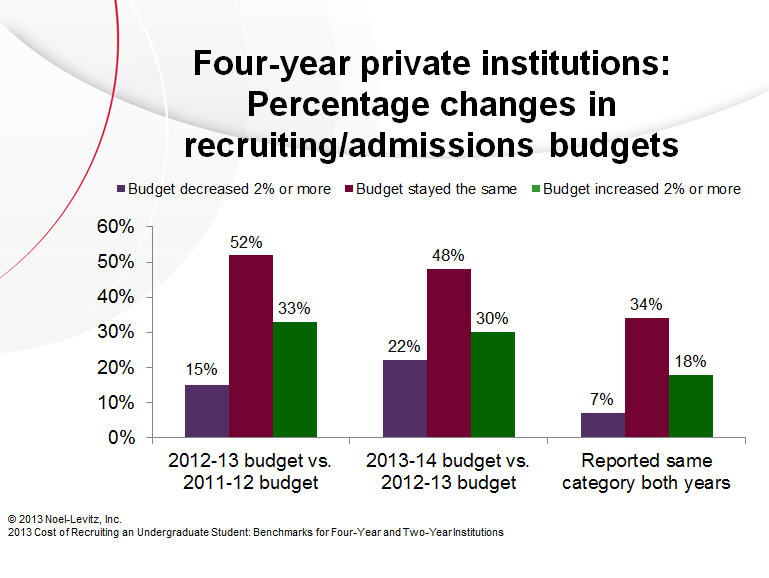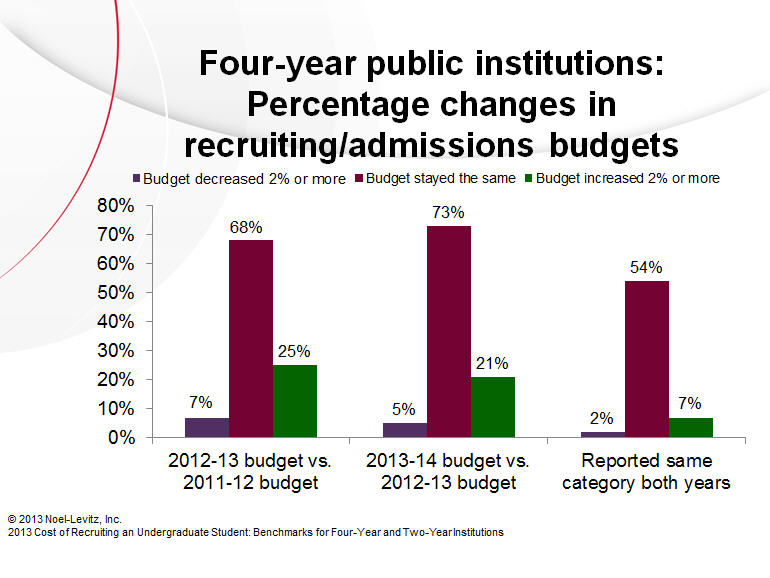enrollment
Goal-setting for the new year: How does your budget for recruitment and marketing compare to new benchmark data?
If you are like me, the start of a new year motivates you to reach your goals and make the most of available resources. For most enrollment managers, that means reaching some lofty new student enrollment goals while at the same time managing marketing and recruitment budgets. Balancing goals and budgets can be a daunting task, but now there is new benchmark data to help guide your efforts.
The benchmarks in Noel-Levitz’s just-released 2013 Cost of Recruiting an Undergraduate Student Report are for two-year and four-year institutions. These data allow you to compare the typical budget and staff size for your type of institution. While I encourage you to see the entire report for a more comprehensive understanding of the research and data calculations, let me highlight three findings:
-
- If you work for a four-year private institution, it is no surprise that you need to be prepared to spend more to reach these students and sell them on the value and cost of a private education. The median cost to recruit a single student was the highest for four-year private institutions at $2,433 per student and lowest for two-year public institutions at $123 per student.

(Click to enlarge.)
*See the report for details. - More staff are typically needed to recruit students to four-year private institutions. The median number of enrolled students per employee in the admissions/recruitment office (including all full-time-equivalent staff members) was 31 for four-year private institutions. That number rises to 111 for four-year public institutions and to 375 for two-year public institutions.
- If you work for a four-year private institution, it is no surprise that you need to be prepared to spend more to reach these students and sell them on the value and cost of a private education. The median cost to recruit a single student was the highest for four-year private institutions at $2,433 per student and lowest for two-year public institutions at $123 per student.

- Only 30 percent of four-year private institutions and 21 percent of four-year public institutions reported substantially increasing (by 2 percent or more) their budgets in 2013-14. What I find even more surprising is that 22 percent of the private institutions reported that their budgets took a hit, meaning these offices are being asked to do more with less.


So what can you do with this information? In another blog, “Nine Strategies for Successful Enrollment Management,” my colleague Peter Bryant recommends that you identify and secure sufficient resources to meet enrollment objectives. I encourage you to use the data in this report coupled with a thoughtful analysis of your own specific campus data to do just that.
Keep in mind that, while benchmark data can be very useful, these data cannot take the place of your own internal analysis. Every campus is unique. Each campus has different goals with varying price tags compared to those of other campuses. Your enrollment goals (geography, competition, selectivity, and so on) have a unique impact on the amount of money you need to invest in order to reach them.
I encourage you and your team to spend more time with the 2013 report to gain a better understanding of how you may compare to similar institutions, and what you may be able to do to reach your 2014 goals. If you have questions or would like to discuss your recruiting costs and staffing size, please do not hesitate to email me. I look forward to hearing from you.
Also, if you and your colleagues are looking for strategies for staying more competitive in today’s higher education environment, Noel-Levitz President Kevin Crockett and Senior Vice President Rob Baird will present a free webinar on January 27, Pricing and Positioning Your Institution in a Turbulent Economy. There will be a version of the webinar for four-year private campuses and one for four-year public institutions.
